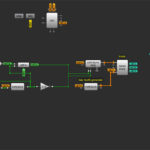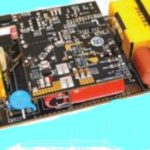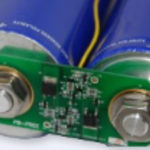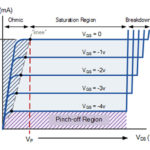 Vishay Intertechnology introduced a new 40 V n-channel MOSFET half-bridge power stage that delivers increased power density and efficiency for white goods and industrial, medical, and telecom applications. Integrating high side and low side MOSFETs in one compact PowerPAIR 3.3 mm by 3.3 mm package, the Vishay Siliconix SiZ240DT provides best in class on-resistance and on-resistance times gate charge — a key figure of merit (FOM) for MOSFETs used in power conversion applications.
Vishay Intertechnology introduced a new 40 V n-channel MOSFET half-bridge power stage that delivers increased power density and efficiency for white goods and industrial, medical, and telecom applications. Integrating high side and low side MOSFETs in one compact PowerPAIR 3.3 mm by 3.3 mm package, the Vishay Siliconix SiZ240DT provides best in class on-resistance and on-resistance times gate charge — a key figure of merit (FOM) for MOSFETs used in power conversion applications.
The two TrenchFET MOSFETs in the SiZ240DT are internally connected in a half-bridge configuration. The SiZ240DT’s Channel 1 MOSFET, which is typically used as the control switch in a synchronous buck converter, provides maximum on-resistance of 8.05 mΩ at 10 V and 12.25 mΩ at 4.5 V. The Channel 2 MOSFET, which is typically a synchronous switch, features on-resistance of 8.41 mΩ at 10 V and 13.30 mΩ at 4.5 V. These values are up to 16 % lower than those of the closest competing products. When combined with a low gate charge of 6.9 nC (Channel 1) and 6.5 nC (Channel 2), the resulting on-resistance times gate charge FOM is 14 % lower than the next best device, enabling higher efficiency for fast switching applications.
65 % smaller than dual devices in 6 mm by 5 mm packages, the dual MOSFET released today is one of the most compact integrated products on the market. It provides designers with a space-saving solution for motor control in vacuum cleaners, drones, power tools, home/office automation, and non-implantable medical devices, in addition to half-bridge power stages for synchronous buck DC/DC converters, wireless chargers, and switch-mode power supplies in telecom equipment and servers.
The integrated MOSFET features a wire-free internal construction that minimizes parasitic inductance to enable high-frequency switching and thus reduces the size of magnetics and final designs. Its optimized Qgd / Qgs ratio reduces noise to further enhance the device’s switching characteristics. The SiZ240DT is 100 % Rg- and UIS-tested, RoHS-compliant, and halogen-free.
Samples and production quantities of the new dual MOSFET are available now, with lead times of 12 weeks for large orders. Pricing for U.S. delivery only starts at $0.38 per piece.







Leave a Reply